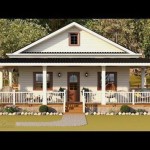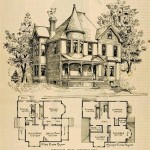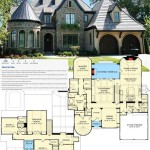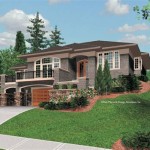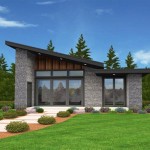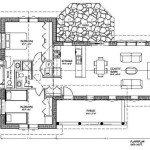Small Dog House Plans provide detailed instructions and diagrams for constructing a miniature dwelling specifically designed to accommodate the needs of small breeds. These plans are intended to empower dog owners with the knowledge and guidance to create a cozy and comfortable shelter for their beloved pets.
Whether you own a Chihuahua, a Yorkshire Terrier, or any other petite pooch, a well-crafted dog house is an essential investment. These structures offer protection from the elements, ensuring your furry friend stays warm during chilly nights and cool during the scorching summer months. Additionally, dog houses provide a sense of security and privacy for your pet, allowing them to relax and escape into a space that’s uniquely theirs.
In the following sections of this article, we will delve into the intricate details of Small Dog House Plans, exploring various designs, materials, and construction techniques. We will guide you through each step of the building process, from selecting the perfect location to adding finishing touches that will make your dog’s house not just a shelter, but a cherished sanctuary.
When crafting Small Dog House Plans, it’s crucial to consider the following key points:
- Proper Ventilation
- Insulation for Temperature Control
- Adequate Space
- Durable Weather-Resistant Materials
- Elevated Floor for Drainage
- Easy Cleaning and Maintenance
- Roof Pitch for Water Runoff
- Secure Door and Hinges
- Location: Avoid Extreme Sun/Wind
- Size Proportionate to Dog’s Size
By incorporating these elements into your Small Dog House Plans, you can ensure a comfortable, safe, and long-lasting shelter for your beloved pet.
Proper Ventilation
In designing Small Dog House Plans, ensuring proper ventilation is paramount. Adequate airflow prevents the buildup of moisture, stale air, and odors, creating a healthy and comfortable environment for your furry friend.
Incorporate ventilation openings on multiple sides of the dog house, positioned near the top and bottom to facilitate cross-ventilation. These openings allow fresh air to enter and circulate, while stale air and moisture escape. Avoid placing ventilation openings directly opposite each other, as this can create a draft that may discomfort your dog.
Consider installing a small exhaust fan or vent in the back of the dog house to enhance air circulation. This is especially beneficial during warm weather or if the dog house is located in an enclosed area. Ensure the fan or vent is securely installed and protected from rain and debris.
Proper ventilation also helps regulate temperature inside the dog house. During hot weather, adequate airflow prevents the buildup of excessive heat, keeping your dog cool and comfortable. Conversely, in cold weather, ventilation helps release moisture that may accumulate from your dog’s breath, preventing the formation of frost or condensation that can make the dog house damp and uncomfortable.
Insulation for Temperature Control
Insulation plays a crucial role in Small Dog House Plans, ensuring your dog’s comfort and well-being in varying weather conditions. Proper insulation helps regulate temperature inside the dog house, keeping your furry friend warm during chilly nights and cool during hot summer days.
Choose insulation materials specifically designed for outdoor use, such as rigid foam insulation boards or spray foam insulation. These materials are moisture-resistant and provide excellent thermal insulation, preventing heat loss in cold weather and heat gain in warm weather.
When installing insulation in your Small Dog House Plans, ensure it covers all surfaces of the dog house, including the walls, roof, and floor. Pay particular attention to sealing any gaps or cracks where cold air may enter or warm air may escape. You can use caulk or expanding foam to seal these areas effectively.
The amount of insulation you need will depend on the climate you live in and the size of the dog house. For colder climates, consider using thicker insulation or multiple layers of insulation to provide better protection from the cold. In warmer climates, you may opt for thinner insulation or focus on ventilation to prevent overheating.
Proper insulation not only enhances your dog’s comfort but also contributes to their overall health. By maintaining a stable temperature inside the dog house, you can reduce the risk of hypothermia in cold weather and heatstroke in hot weather, ensuring your furry companion stays healthy and happy all year round.
Adequate Space
When designing Small Dog House Plans, ensuring adequate space is crucial for your dog’s comfort, health, and well-being. A dog house that is too small can be cramped and uncomfortable, restricting your dog’s movement and potentially leading to stress and anxiety. Conversely, a dog house that is too large may not provide a sense of security and coziness that smaller breeds crave.
To determine the appropriate size for your Small Dog House Plans, consider your dog’s breed, size, and sleeping habits. Measure your dog from nose to tail and add about 6 inches to determine the minimum length of the dog house. For the width, measure your dog’s height at the shoulder and add about 4 inches to ensure your dog can comfortably stand up and turn around inside the house.
The height of the dog house should allow your dog to sit upright without hitting their head. As a general rule, the height should be about 6 inches more than your dog’s height at the shoulder. For example, if your dog is 12 inches tall at the shoulder, the height of the dog house should be around 18 inches.
In addition to providing enough space for your dog to move around comfortably, consider their sleeping habits. Some dogs prefer to stretch out while others curl up. If your dog is a stretcher, make sure the dog house is long enough to accommodate their preferred sleeping position. If your dog is a curler, a smaller, cozier dog house may be more suitable.
Providing adequate space in your Small Dog House Plans ensures your furry friend has a comfortable and safe retreat where they can relax, sleep, and feel at home.
Durable Weather-Resistant Materials
When choosing materials for your Small Dog House Plans, durability and weather resistance are paramount. The materials you select should be able to withstand the elements, providing your dog with a safe and comfortable shelter in all types of weather.
For the exterior of the dog house, consider using materials such as treated wood, vinyl, or composite materials. Treated wood is a cost-effective option that is resistant to rot and decay. Vinyl is a durable and low-maintenance material that is also waterproof and UV-resistant. Composite materials offer a combination of strength, durability, and weather resistance, making them a great choice for harsh climates.
For the roof of the dog house, opt for materials that are waterproof and provide insulation. Asphalt shingles, metal roofing, or rubber roofing are all good choices. Asphalt shingles are a cost-effective option that is easy to install and provides good protection from the elements. Metal roofing is a durable and long-lasting option that is also fire-resistant. Rubber roofing is a waterproof and flexible option that is easy to install and can conform to the shape of the roof.
For the interior of the dog house, use materials that are easy to clean and disinfect. Plywood, linoleum, or tile are all good options. Plywood is a durable and affordable option that can be painted or stained to match the exterior of the dog house. Linoleum is a waterproof and easy-to-clean material that is also comfortable for your dog to lie on. Tile is a durable and easy-to-clean option that is also aesthetically pleasing.
By choosing durable weather-resistant materials for your Small Dog House Plans, you can ensure that your dog has a safe and comfortable shelter that will last for many years to come.
Elevated Floor for Drainage
Providing an elevated floor in your Small Dog House Plans is essential for ensuring proper drainage and preventing moisture buildup, which can lead to discomfort, mold, and mildew growth.
- Prevents Water Accumulation: An elevated floor raises the dog house off the ground, allowing water to drain away from the structure. This is especially important in areas with heavy rainfall or flooding, as it prevents water from seeping into the dog house and creating a damp environment.
- Promotes Air Circulation: The space beneath the elevated floor allows air to circulate freely, which helps to keep the dog house dry and well-ventilated. This is important for preventing the buildup of moisture and odors, which can make the dog house uncomfortable for your pet.
- Reduces the Risk of Pests: Moisture and dampness can attract pests such as insects and rodents. An elevated floor helps to keep the dog house dry and less inviting to these pests, providing a cleaner and healthier environment for your dog.
- Provides Insulation: The air space beneath the elevated floor can act as an insulator, helping to keep the dog house warmer in cold weather and cooler in hot weather. This can make the dog house more comfortable for your pet year-round.
Incorporating an elevated floor into your Small Dog House Plans is a simple but effective way to ensure your dog’s comfort, health, and well-being.
Easy Cleaning and Maintenance
Ensuring your Small Dog House Plans incorporate easy cleaning and maintenance features is crucial for maintaining a hygienic and comfortable living space for your pet. Regular cleaning not only keeps the dog house fresh and inviting but also helps prevent the buildup of dirt, bacteria, and parasites that can compromise your dog’s health and well-being.
- Removable Roof or Hinged Door: A removable roof or hinged door allows for easy access to the interior of the dog house, making cleaning a breeze. You can easily remove the roof or open the door to sweep out dirt, vacuum up pet hair, and wipe down surfaces with a disinfectant cleaner.
- Smooth, Non-Porous Surfaces: Choose materials for the interior of the dog house that are smooth and non-porous, such as linoleum, tile, or sealed wood. These surfaces are easy to wipe clean and disinfect, preventing the accumulation of dirt and bacteria that can harbor parasites and cause unpleasant odors.
- Washable Bedding: Provide your dog with a washable bed or cushion that can be easily removed from the dog house for regular cleaning. This helps to keep the bedding fresh and free from dirt, pet hair, and parasites that can cause skin irritation or allergic reactions in your dog.
- Proper Ventilation: Incorporate proper ventilation into your Small Dog House Plans to promote air circulation and prevent the buildup of moisture and odors. Install ventilation openings on multiple sides of the dog house, positioned near the top and bottom to facilitate cross-ventilation. This helps to keep the air inside the dog house fresh and reduces the risk of mold and mildew growth.
By incorporating these easy cleaning and maintenance features into your Small Dog House Plans, you can ensure a clean, hygienic, and comfortable living space for your beloved pet.
Roof Pitch for Water Runoff
Incorporating an appropriate roof pitch into your Small Dog House Plans is crucial for ensuring proper water runoff and preventing moisture accumulation. A well-pitched roof allows rainwater and melted snow to drain away effectively, preventing leaks, rot, and other structural damage to the dog house.
- Prevents Water Pooling: A roof with a sufficient pitch allows water to flow off quickly and efficiently, preventing it from pooling on the roof surface. Water pooling can lead to leaks, damage to the roofing material, and the growth of mold and mildew.
- Protects Against Leaks: A properly pitched roof helps to prevent leaks by ensuring that water flows away from the seams and joints of the roofing material. This is especially important in areas with heavy rainfall or snowfall, as it helps to keep the dog house dry and protected from the elements.
- Extends the Lifespan of the Dog House: By preventing water accumulation and leaks, a well-pitched roof helps to extend the lifespan of the dog house. Moisture damage can lead to rot, decay, and structural problems, which can shorten the life of the dog house and make it less comfortable and safe for your pet.
- Enhances the Appearance of the Dog House: A roof with an appropriate pitch not only improves the functionality of the dog house but also enhances its appearance. A well-proportioned roofline can add visual interest and make the dog house more aesthetically pleasing.
When determining the appropriate roof pitch for your Small Dog House Plans, consider the climate in your area. In areas with heavy rainfall or snowfall, a steeper roof pitch is recommended to facilitate faster water runoff. In areas with less precipitation, a gentler roof pitch may be sufficient.
Secure Door and Hinges
Incorporating a secure door and sturdy hinges into your Small Dog House Plans is essential for ensuring the safety and comfort of your beloved pet. A well-secured door prevents unwanted access to the dog house, while strong hinges ensure that the door opens and closes smoothly and remains securely in place.
Preventing Unwanted Access: A secure door acts as a protective barrier, preventing unauthorized animals or individuals from entering the dog house. This is especially important if you have other pets or live in an area with stray animals, as it helps to keep your dog safe from potential harm or aggression.
Protecting Against the Elements: A well-fitting door helps to protect the interior of the dog house from the elements. It prevents rain, wind, and snow from entering the dog house, keeping your pet warm and dry. A secure door also helps to reduce drafts, ensuring a comfortable indoor environment for your dog.
Ensuring Smooth Operation: Sturdy hinges are essential for ensuring that the door of the dog house opens and closes smoothly and without getting stuck. Well-lubricated hinges prevent the door from squeaking or becoming difficult to open, making it easy for your dog to enter and exit the dog house as needed.
Preventing Injuries: Secure hinges help to prevent injuries to your dog or yourself. If the hinges are loose or damaged, the door can fall off or swing open unexpectedly, potentially causing injury to your dog or your hands when opening the door.
Location: Avoid Extreme Sun/Wind
When selecting a location for your dog house, it is crucial to avoid areas that are exposed to extreme sun or wind. Prolonged exposure to these elements can make the dog house uncomfortable and even dangerous for your pet.
Extreme Sun: Direct sunlight can heat up the dog house to dangerous levels, especially during the summer months. This can lead to heatstroke, which is a medical emergency for dogs. Symptoms of heatstroke include panting, drooling, vomiting, diarrhea, and seizures. If your dog shows any of these symptoms, seek veterinary attention immediately.
Extreme Wind: Strong winds can damage the dog house and make it unsafe for your pet. High winds can also blow the dog house over, which can injure your dog or cause the dog house to become a hazard to others.
To avoid these risks, place the dog house in a shaded area that is protected from the wind. If possible, place the dog house under a tree or on a covered porch. You can also provide additional shade by planting shrubs or bushes around the dog house.
By following these tips, you can help ensure that your dog’s house is a safe and comfortable place for your furry friend.
Size Proportionate to Dog’s Size
When determining the appropriate size for your Small Dog House Plans, it is crucial to consider the size of your dog. The dog house should be large enough for your dog to stand up, turn around, and lie down comfortably, but not so large that it becomes drafty and difficult to heat.
As a general rule, the length of the dog house should be about 6 inches longer than the length of your dog from nose to tail. The width should be about 4 inches wider than the width of your dog at the shoulders. The height should be about 6 inches taller than the height of your dog at the shoulders.
For example, if your dog is 12 inches long from nose to tail, 8 inches wide at the shoulders, and 10 inches tall at the shoulders, the ideal size for your Small Dog House Plans would be approximately 18 inches long, 12 inches wide, and 16 inches tall.
It is important to note that these are just general guidelines. The best way to determine the appropriate size for your Small Dog House Plans is to measure your dog and add a few inches to each measurement to allow for comfortable movement.
:max_bytes(150000):strip_icc()/Beautiful-Pallet-Dog-House-with-Veranda-1-5a202f90494ec90037893a82.jpg)




:max_bytes(150000):strip_icc()/diygirlcave-5b437db6c9e77c0037b166b8.jpg)




Related Posts


